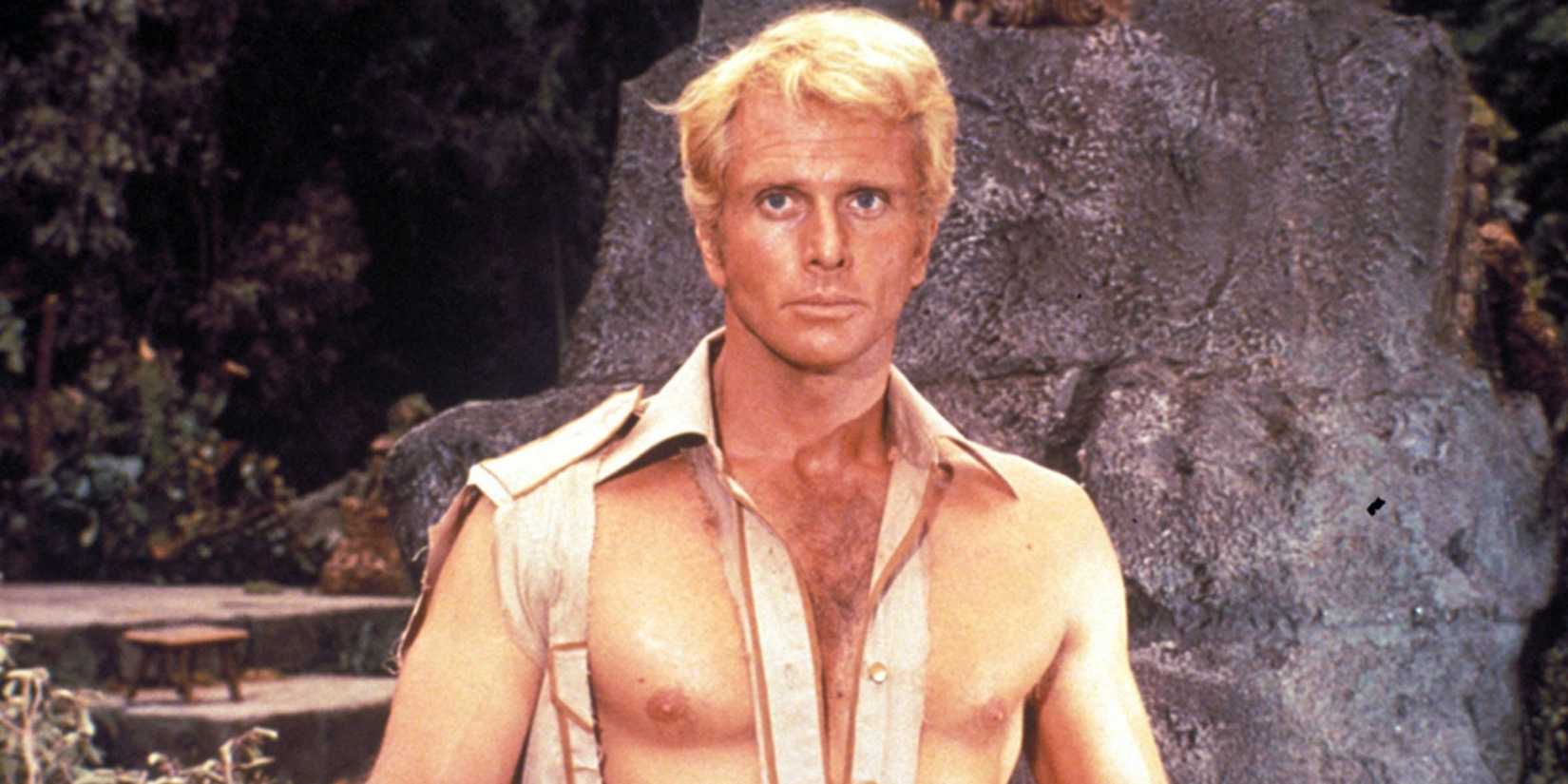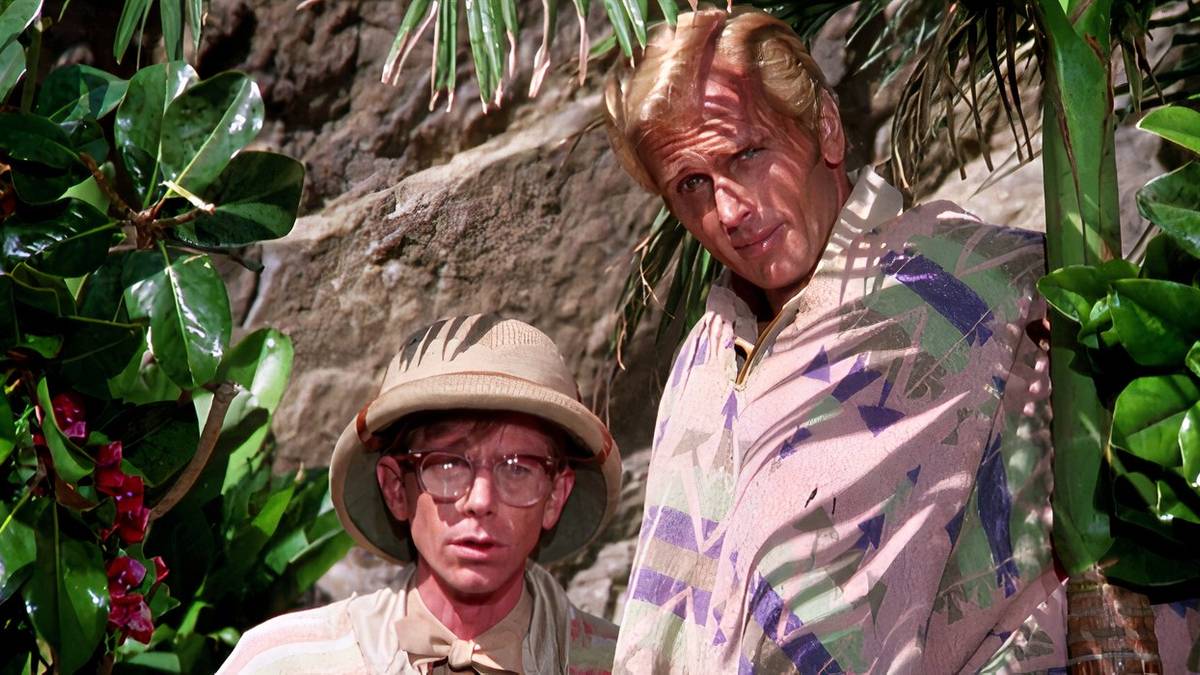While superheroes currently dominate the American comic book market, readers of the 1930s had very different characters to keep them entertained. Between newspaper comic strips like Flash Gordon and masked heroes in magazines like Zorro, readers during the Great Depression turned to science fiction and adventure for escapism. In 1933, one of the greatest pre-Superman characters of all time was created, and he became nothing short of a sensation.
More than forty years after this character’s debut, director Michael Anderson attempted to bring this pulp hero to the big screen. For inspiration, he drew from a story that Marvel had adapted to print just three years earlier. The resulting film may be one of the cheesiest comic book adaptations ever made, but it’s absolutely worth watching.
Doc Savage Embodies the Pulp Era

Image via Warner Bros.
Decades before superheroes burst onto the scene, the print fiction industry was dominated by a different kind of story: pulp magazines. Named after the cheap paper they were printed on, these magazines were home to some of the greatest pulp heroes of all time, from the Green Lama and The Shadow to Zorro and Conan the Barbarian.
While modern comic book heroes tend to fit neatly within the superhero genre, pulp heroes weren’t quite as pigeonholed. They appeared in dark fantasy, crime, science fiction, adventure, and war stories, all united by a shared goal of pure escapism. Made at the height of the Great Depression, these mags kept millions of Americans entertained during their downtime before TV came along. At a time of misery, poverty, social strife and looming war in Europe, these stories appealed to people from all walks of life.
In 1933, one of the most iconic pulp heroes was created for Street & Smith Publishing by Lester Dent, Henry W. Ralston, and John L. Nanovic. Almost fifty years before Raiders of the Lost Ark, Clark “Doc” Savage Jr. was the prototypical Indiana Jones, a man who embodied adventure and the idea of peak masculinity. Just five years later, Jerry Siegel and Joe Shuster would “borrow” aspects of the character for Superman, swiping the “Man of Bronze” moniker.
In later years, other DC creators would go so far as to steal the Fortress of Solitude, right down to its location in the Arctic. Likewise, elements of the hero can be found in characters like Batman and the Phantom, both heroes who share his commitment to achieving peak physical and mental condition.
Science fiction novelist Robert Heinlein summed up the ethos of heroes like Doc Savage through his “competent man” archetype. Building a list of qualities that define a competent male protagonist, Heinlein effectively listed off everything a reader could expect from a pre-Golden Age pulp hero. From Batman and Superman to Indiana Jones and Rick O’Connell, the Doc Savage archetype can be found across cinema and comics alike.
For this reason and more, a movie made sense in 1975, just as modern directors like Shane Black have also been championing the idea of a fresh attempt. This retro movie is one of the cheesiest things ever put to film, but that campiness is part of its charm. While the movie’s not for everyone, it’s arguably one of the most underrated adventure movies ever.
Doc Savage Landed His Own Movie
In 1975, audiences were treated to their first, and, as of 2025, only Doc Savage feature film, with Ron Ely cast in the titular role. The film opens with a triumphant song heralding the arrival of the hero to his Fortress of Solitude, along with a basic explanation of who he is and his backstory. When he learns of his father’s death in the nation of Hidalgo, he convenes a meeting with his friends, the Fabulous Five, to learn what happened.
While the group assembles in his apartment, Doc narrowly survives an assassination attempt, pursuing the would-be murderer across the street with his companions. Although the killer dies in the confrontation, the men realize a connection to Hidalgo and decide to set off on an adventure. After Doc and the Fabulous Five survive another attempt on their lives, they find their way into the company of the dastardly international pirate and criminal, Captain Seas.
When they escape yet another murder attempt, they arrive in Hidalgo, where Doc learns that his father was gifted a plot of land by the elusive Quetzamal tribe. Finally piecing things together, Savage realizes that Captain Seas is in league with a military leader in the nation, and they’re exploiting the tribe for slave labor. With the freedom of the Quetzamal hanging in the balance, Doc and the Five use their various skills to fight their way to victory.
The movie is, from start to finish, one of the cheesiest executions of a film script ever made, replete with a scene of a villain sleeping in an oversized baby cradle. From Doc delivering a hopeful monologue to the sound of a chorus and applause to absurd fight choreography, the film never once takes itself particularly seriously. Despite having identical stories, the Marvel miniseries and original novel manage to treat the character with more weight, and his debut adventure with more gravity. Doc Savage feels more like a child-friendly fever dream of a Savage adventure and is sure to at least be appreciated by younger viewers.
Doc Savage Loosely Qualifies As a Marvel Movie
Licensing deals are nothing new in the world of comics, whether it’s IDW turning in an exceptional Judge Dredd series in 2012 or Marvel and DC’s famous 1970 rivalry for Planet of the Apes. In 1972, Marvel turned to writers Roy Thomas and Steve Englehart, alongside artist Ross Andru and others, to create a Doc Savage miniseries, adapting various novels to print.
The very first issue lays the groundwork for the story that would become the 1975 movie. Although the novel serves as the primary basis for the film, there are scenes that play out almost shot-for-shot like images from panels in the Marvel series, as if the director studied the comics for guidance. An interesting experiment for readers would be to read the Marvel Comics arc before the film.
All else aside, this shows just how much tone counts in a film, and how trying to make a movie that looks like a living comic can be a hindrance as much as anything. It’s a classic case of something being great on paper but filmmakers doing it a disservice. However, when all is said and done, Ron Ely deserves some credit for his role as Savage. No stranger to pulp heroes, having also played Tarzan, he did a commendable job with the script he was given, and it’s hard to blame him for how the movie turned out. It was actually a loss of funding behind the scenes that forced the movie to be on the cheaper side.
Doc Savage has been passed around a variety of publishers over the years, including Marvel, DC, and Dynamite Entertainment. Under DC, readers were treated to a fantastic piece of fan service as the hero was partnered with the Spirit (created by Will Eisner) and Batman in their own continuity. There, in the miniseries First Wave, DC honored the significance of all three characters as foundational figures, and Savage’s own solo series remains his best comic book treatment. Like The Phantom and The Shadow, the character is kept fresh by a revolving door of talent, all leaving their own mark on the characters for a new generation.
Doc Savage Is Worth a Watch
Fifty years after its release, Doc Savage remains a divisive movie, at least among the few people who’ve seen it. For true fans of the hero, the film’s cheesy tone doesn’t quite align with what they had in mind for the character. In fact, many would rightly argue that Indiana Jones is closer to what the creators intended than Michael Anderson’s film, but the fault certainly doesn’t lie with Ron Ely.
Although the movie would’ve been greatly improved by a more hard-hitting, serious adventure tone, the star did a good job with what he had of embodying the hero. Even if only as a relic of early superhero cinema, the movie should be revisited by younger viewers, and they might discover some semblance of appreciation for the character’s potential.
In a world where comic book movies can feel similar in almost every respect, looking back to cinema’s first efforts is still important. While Anderson’s movie wasn’t without its flaws, it holds a special place in comic book history for exploring the figure many view as the world’s first superhero. Fifty years on, Doc Savage is an intriguing movie that embraces the cheesy side of superheroes, and fans even have a Marvel Comics series to go with it.

